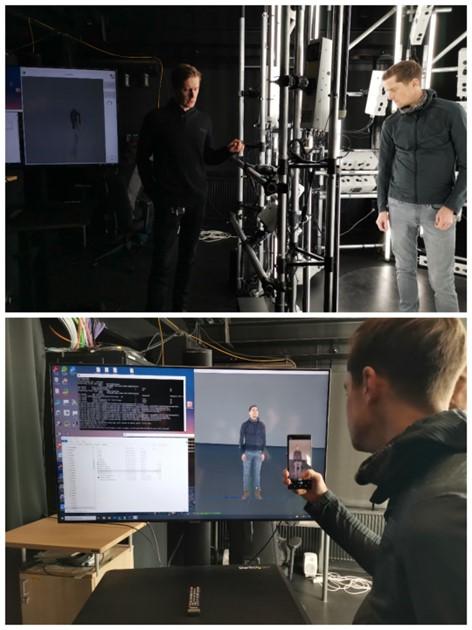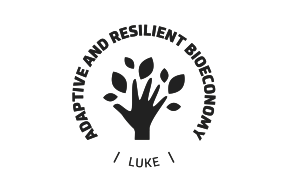Harnessing technology for virtual nature experiences
Many people may ask why nature should be virtualised, since Finland is full of forests. Yet, there are many reasons. There is a large number of people for whom access to nature is not as easy as it is for the majority. There are people who have physical or mental barriers which prevent going out into the nature to experience it. Examples include people with reduced mobility, elderly people in nursing homes, and hospital patients. In addition, a large number of people live in large cities where nature is far away or destroyed by human activity. In some countries, there are also no “freedom to roam” rights that would allow to simply go out into nature. Virtual nature solutions have been found to have similar well-being benefits as visiting real nature, for example in reducing stress and increasing recovery and restoration. Therefore, virtual nature rooms or other virtual nature solutions, for example in workplaces and educational institutions, would allow for more restorative break-out spaces, where people could recover from the stresses of work or study better than in basic coffee rooms. Teaching and simulation are other potential use cases for virtual nature.
Technology offers many opportunities to build immersive and interactive virtual nature experiences. These can be built either by capturing natural environments with camera and recording soundscapes with a microphone, or by using CGI techniques to create virtual landscapes using game engines, for example. Some of the key methods and technologies that can be used are listed below, together with a more detailed list of possible applications:
- VR headsets and virtual environments: VR technology and virtual nature rooms enable the immersive presentation of virtual nature environments, captured on camera or modelled in 3D engines.
- AR applications: augmented reality can be used to integrate digital nature elements into the environment, which can enrich and extend the experience.
- Dynamic ecosystems: AI, modelling, or manual simulations can be used to simulate and represent changes in nature, such as silvicultural measures or seasonal changes. This allows the user to experience nature as a living and constantly changing entity and to see the impact of certain human actions on nature.
- Interactive elements: interactive elements in virtual nature can make the experience more personal and engaging. This can be used, for example, to build educational games or to provide additional information to the virtual nature experience.
- Teaching: Virtual nature experiences allow, for example, teaching environmental science in a digital format, allowing students to explore biodiversity without geographical constraints and without the need to travel to the site, and regardless of the season.
- Therapy and well-being: restorative virtual environments can be used as stress relievers in work and study environments or as part of therapies where the calming effect of nature plays a key role.
- Tourism and cultural heritage: virtual travel experiences also allow rare or inaccessible natural areas to be presented to a wider audience. This will also enable people with travel constraints to experience nature in different places.
At the Natural Resources Institute Finland, the potential and impact of virtual nature is being studied in the VirtuLab virtual nature laboratory. VirtuLab is a virtual nature space located in Viikki, Helsinki, which allows the natural environment to be brought indoors using high-quality audiovisual means. The space allows to experience nature when it is not easily accessible. VirtuLab will explore the potential of virtual nature, including the effectiveness of virtual environments, technological solutions, and different types of content. VirtuLab is also suitable for research on the acceptability of environmental change and resource use, and the welfare impacts of virtual nature. Future opportunities include gamification of nature experiences and exploring new digital nature solutions. The space can be used in interdisciplinary environmental research. Luke's research has shown that virtual nature has very similar effects to real nature visits. A study published in 2022 found that breaks in virtual nature reduced negative emotions and anxiety in office workers and increased parasympathetic nervous system activity, which indicates relaxation. Another study, published in 2024, compared three different technologies for delivering virtual nature: TV, VR headset, and a virtual nature room. The results showed that participants' restoration increased and stress levels and negative emotions decreased during virtual nature exposure. The study also identified differences between the technologies.
A visit to Tampere
On a related topic, the Finnish Interactive Gardens group visited the University of Tampere (TAU) on 4.2.2025. The programme included meetings with relevant researchers who could potentially collaborate on interactive garden models and applications. We also visited some of TAU's research infras: Ludus and CIVIT.
Ludus - Observatory of Digital Interactions, is a place for learning and research on playful interaction with technology. As such, it is useful for many other purposes, such as usability testing, research on technology-mediated collaboration, etc.
CIVIT - Centre for Immersive Visual Technologies, is a research infrastructure unit located on the Hervanta campus of the University of Tampere, providing research facilities, equipment, and expertise in the emerging field of immersive visual technologies. Its main areas of expertise are advanced visualisation of 3D content, 3D audio-visual information capture, advanced displays, and immersive user experience.
During the visit, we were shown some of the research conducted by TAU researchers on interactions with nature. We were also shown the technology in the research spaces visited and had the opportunity to test volumetric capture, pictured below.
In summary, technology applications such as virtual nature, VR, AR, advanced 3D modelling, simulations, etc., offer powerful tools to create realistic, interactive, and personalised virtual nature experiences. This enables new ways of learning, exploring and enjoying nature for a wider range of users.
More information about Luke’s VirtuLab:
Researcher Tuomas Kari
tuomas.kari@luke.fi
https://www.luke.fi/en/research/research-infrastructures/virtulab-research-on-virtual-nature
This blog post is part of the Interreg Baltic Sea Region-funded Interactive Gardens project.




